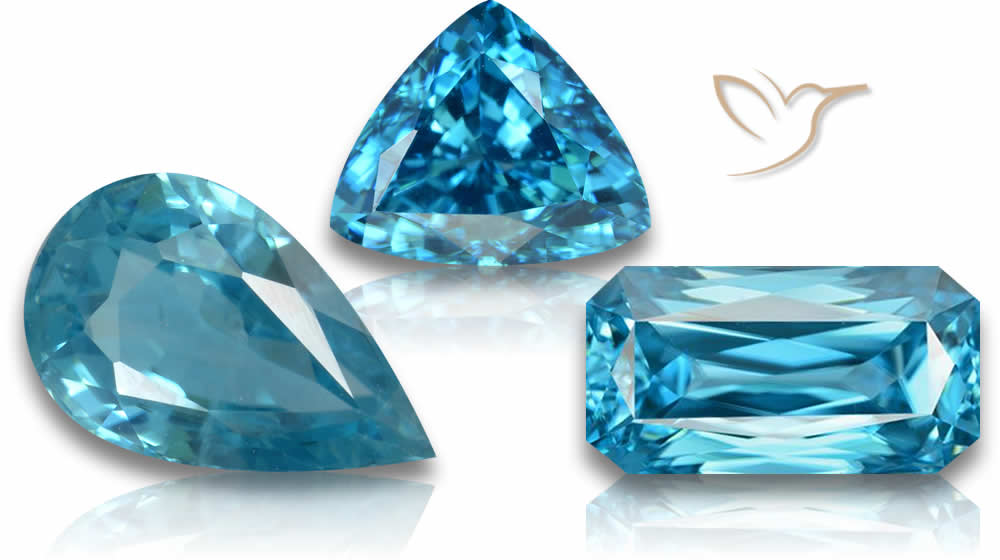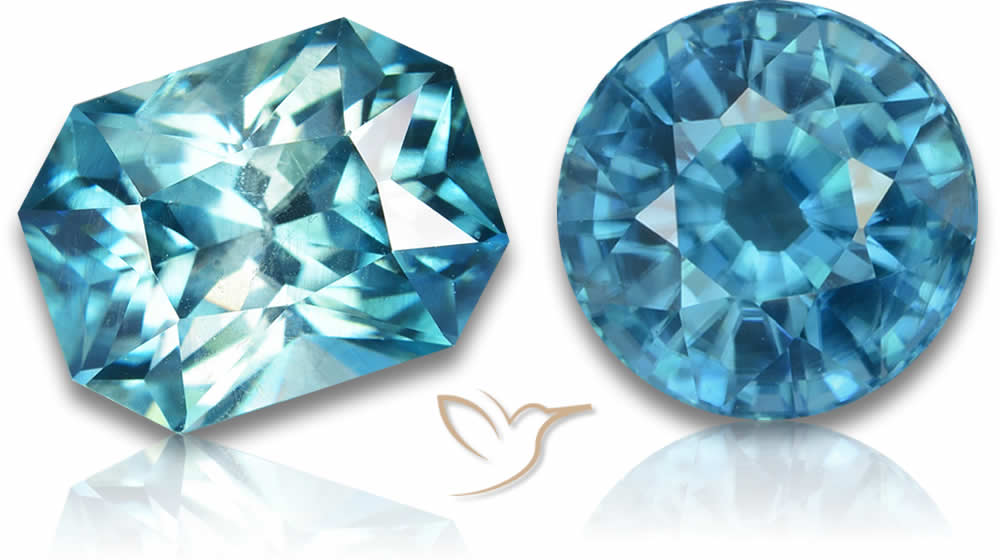Blue Zircon Gemstones: Beauty and Brilliance

Blue zircon is a captivating and brilliant gemstone known for its striking blue color and exceptional sparkle. Often mistaken for sapphire due to its vivid hue and brilliance, natural blue zircon stands out with its remarkable fire and scintillation, making it a popular choice for fine jewelry. Formed under intense pressure deep within the Earth’s crust, this gemstone is prized for both its beauty and its durability. As an alternative birthstone for December, blue zircon offers a unique and vibrant option for those born in that month.
In this article, we’ll explore the origins, properties, and uses of blue zircon gemstones, revealing why this gemstone continues to captivate gem collectors and jewelry enthusiasts worldwide. Let's dive in and see what makes it so special.
Key Takeaways:
- Blue zircon gemstones are natural and celebrated for their vivid color and brilliance.
- They hold cultural and historical significance.
- They have distinct qualities that set them apart from blue sapphire and blue topaz.
- Blue zircon jewelry showcases exceptional brilliance in many designs.
- Pricing can vary depending on clarity, cut, and carat weight.
The Meaning and Significance of Blue Zircon
Blue zircon carries a rich history and spiritual symbolism. Its name stems from the Persian word “zargun,” meaning “golden-colored,” and the broader word “zircon,” meaning “precious stone.” Cherished since ancient times for its radiant blue brilliance, it has long been used in jewelry and decorative arts.
Many believe blue zircon has metaphysical properties, promoting spiritual growth, peace of mind, and grounding. It is also thought to help release negative energy and ease stress or anxiety.
Additionally, blue zircon symbolizes prosperity, abundance, and focus. It is said to help manifest goals and attract positive energy - making it a powerful companion for those seeking balance and motivation.
Disclaimer: Claims about metaphysical properties, healing, or spirituality are based on traditional beliefs and folklore. They are not scientifically proven and should not replace professional medical advice or treatment.
Our comprehensive guide to blue zircon gemstones covers the gem’s color, clarity, durability, and other essential properties that make it a top choice for gem enthusiasts and collectors alike. For more detailed information on zircon gemstones, explore our dedicated resource.
Blue Zircon vs. Blue Sapphire and Blue Topaz: A Comparative Analysis
Choosing the right blue gemstone can be challenging, especially among blue zircon, blue sapphire, and blue topaz. You might be wondering how they stack up - let’s compare their unique qualities to help you make the best decision.
Color
Blue zircon features a vivid blue color that may show greenish or yellowish overtones due to pleochroism. To learn about green zircon variations, check out our guide. Blue sapphire tends to have a deeper, royal blue shade, while blue topaz typically appears lighter and paler in comparison.
Clarity
Blue zircon often has excellent clarity, making it perfect for faceted gems. Blue sapphire can show inclusions that may affect its price, while blue topaz may sometimes display a milky appearance due to its crystal structure.
Luster
Blue zircon boasts a high refractive index, giving it outstanding brilliance and fire. Blue sapphire also has a beautiful luster, although its darker tone can soften the shine. Blue topaz, with a lower refractive index, tends to sparkle less dramatically than the other two.
Ultimately, all three stones offer unique beauty and characteristics, so your choice will depend on personal style and budget.
The Splendor and Craftsmanship of Blue Zircon Jewelry
Blue zircon’s dazzling brilliance makes it a favorite among jewelry designers. From understated designs to bold statement pieces, blue zircon adapts beautifully to a variety of styles.

Blue zircon looks fantastic in many jewelry formats, including stud earrings, necklaces, bracelets, and rings. Some designers highlight blue zircon as the centerpiece, while others use it as a colorful accent. Its compatibility with metals such as white gold, yellow gold, and platinum means jewelers have endless creative options.
When buying blue zircon jewelry, consider factors that impact price: rarity, stone quality, size, cut, and the craftsmanship of the setting itself. Refer to our zircon buying guide for expert tips to make informed decisions.
| Factors Affecting Blue Zircon’s Price | Description |
|---|---|
| Rarity | Its relative rarity increases its value. |
| Quality | Defined by clarity, color, and cut. High-quality stones fetch higher prices. |
| Design | The intricacy of the jewelry and choice of materials affect overall cost. |
| Size and Cut | Larger or uniquely cut stones often command premium prices. |
Blue zircon jewelry is a timeless investment and a wonderful addition to any gem collection, whether you favor classic or contemporary styles.
Conclusion
We hope this article has offered you a thorough look at blue zircon’s fascinating qualities. From its history and beauty to its place in modern jewelry, blue zircon continues to charm gem lovers and collectors.
Historically, blue zircon was first mined in Cambodia in the late 19th century, and since then, deposits have been found in Thailand, Sri Lanka, and Australia. The largest known specimen came from Tanzania, weighing an impressive 122.7 carats.
Despite its rarity, blue zircon holds a cherished spot in gemology for its captivating color and brilliance. Whether you appreciate its vivid blue tones or its legacy, blue zircon is a gem worthy of admiration.
Frequently Asked Questions
What is blue zircon?
Blue zircon is a natural gemstone known for its vivid blue color, brilliance, and fire, often used in jewelry as an alternative to sapphire.
How does blue zircon differ from blue sapphire?
Blue zircon has a brighter sparkle and may show pleochroism, while blue sapphire features a deeper royal blue and can have inclusions affecting its value.
Is blue zircon durable for everyday wear?
Yes, blue zircon is durable and suitable for jewelry, though care should be taken to avoid harsh impacts.
What factors influence the price of blue zircon?
Price depends on rarity, quality (clarity, color, cut), size, and the design of the jewelry piece.
Where is blue zircon sourced from?
Blue zircon is mined in places like Cambodia, Thailand, Sri Lanka, Australia, and Tanzania.

